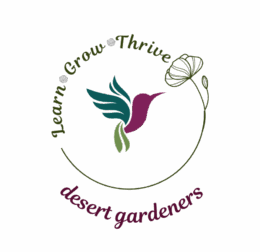Desert climates, as discussed in the previous article in this series (see Deserts 101: What is a desert?) are very different from what many people are used to. They tend to have more sun, a lot less rain, more temperature fluctuations, and strong winds–all of which can damage and kill plants.
Deserts are generally warmer during the day than temperate regions, but this depends on how high the desert is. For example, a high desert like the Tibetan Plateau does not ever get terribly warm because it’s at 15,000 feet elevation. North American deserts are not so extreme, but deserts in Arizona, New Mexico, Nevada, and California can get pretty high—4-6,000 feet or so. Above this elevation in the U.S. Southwest the ecosystem generally transforms from desert into dry scrubland and forests.
Furthermore, because deserts are so dry, they tend to have much more extreme temperature fluctuations between night and day. This is because moisture in the air tends to even out temperatures. So it’s not uncommon for a desert like the Sonoran Desert to have a high temperature of 110 F during the day and get down to 75 F at night. In the winter, deserts frequently dip into freezing temperatures at night, even on days that are warm and pleasant (lke 60 F).
Another consequence of the dry air is that the sun feels much stronger. This is because there are no water droplets in the atmosphere to block and diffuse the sun’s rays. Many gardeners new to the desert Southwest have been dismayed when a plant labeled as “full sun” has withered and died on them. This is another reason to plant natives which are adapted to our unique conditions.
Deserts also tend to have a fair amount of wind. The air near the soil surface gets heated up by the sun and then rises, with cooler air rushing into its place. The lack of denser vegetation means there frequently aren’t many obstacles to the air movement. In areas where the topography changes and we have plateaus or mountains, wind tends to blow up and over the high areas.
Because the winds tend to be dry, they can make gardening in unsheltered areas difficult. The wise gardener will construct or plant barriers to wind to help their more delicate plants thrive.
Finally, deserts tend to have little rain (by definition). For example, our average yearly precipitation in the Sonoran Desert is 10-12 inches. Again, native plants are best suited to these extremes, but even they need some nursing along their first 2-3 years after planting. For gardeners in the desert, the rule is to bring in a water supply of some sort BEFORE you plant anything. Trust me, it will die faster than you think.



